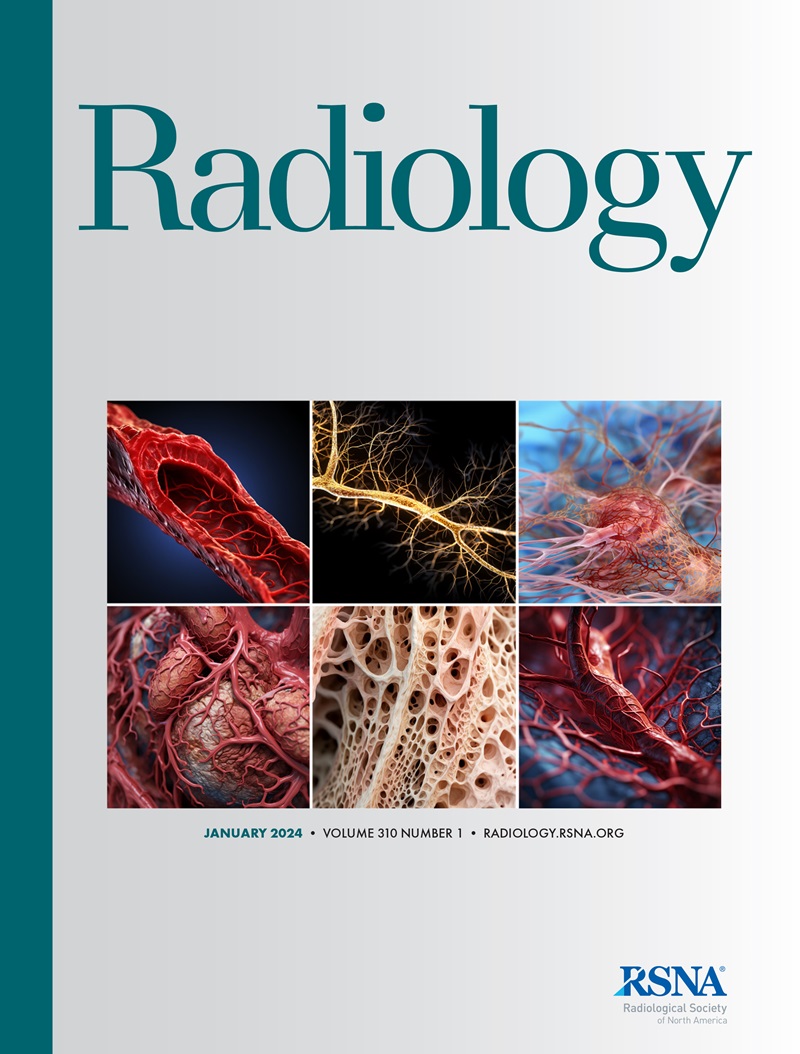求助PDF
{"title":"背景实质增强对乳腺MRI诊断性能的影响:系统回顾和荟萃分析。","authors":"Sonja Bechyna, Pascal A T Baltzer","doi":"10.1148/radiol.241919","DOIUrl":null,"url":null,"abstract":"<p><p>Background Breast MRI is the most sensitive modality for detecting breast cancer, but its diagnostic performance can be reduced by background parenchymal enhancement (BPE). However, the implications of the degree of BPE in diagnostic evaluation remain controversial due to conflicting evidence. Purpose To conduct a systematic review and meta-analysis to determine whether the presence of moderate or marked BPE in women undergoing breast MRI negatively affects diagnostic performance compared with minimal or mild BPE. Materials and Methods On May 6, 2024, a systematic review of PubMed and Google Scholar was conducted on studies assessing the diagnostic performance of contrast-enhanced MRI in detecting breast cancer. Studies published until May 2024 were included if they provided raw data to extract or calculate true-positive, false-positive, true-negative, and false-negative results. Data were integrated using a bivariate random-effects model, and the sensitivity and specificity were compared between minimal or mild and moderate or marked BPE. Sources of heterogeneity were explored using meta-regression analysis. Summary receiver operating characteristic analysis was performed to compare overall diagnostic performance at different BPE levels by using a <i>Z</i> test. Results Eight studies of 6044 women (mean age, 52 years) were included. Minimal or mild BPE was associated with higher sensitivity (95.3% vs 84.1%; <i>P</i> = .02) and higher specificity (89.0% vs 78.7%; <i>P</i> = .02) compared with moderate or marked BPE. Diagnostic performance was higher for minimal or mild BPE (area under the receiver operating characteristic curve [AUC], 0.95; 95% CI: 0.92, 0.96) compared with moderate or marked BPE (AUC, 0.91; 95% CI: 0.88,0.93; <i>Z</i> score, 2.69; <i>P</i> = .007). Moderate or marked BPE and publication year in cases of moderate or marked BPE were covariates influencing the diagnostic odds ratio. Moderate or marked BPE remained an independent predictor of the diagnostic performance at multivariable analysis (diagnostic odds ratio, -1.33; <i>P</i> = .002). Conclusion The degree of BPE influences the diagnostic performance of breast MRI, with minimal or mild BPE being associated with higher sensitivity and specificity and moderate or marked BPE being associated with lower diagnostic performance. © RSNA, 2025 <i>Supplemental material is available for this article.</i> See also the editorial by Bahl in this issue.</p>","PeriodicalId":20896,"journal":{"name":"Radiology","volume":"315 2","pages":"e241919"},"PeriodicalIF":15.2000,"publicationDate":"2025-05-01","publicationTypes":"Journal Article","fieldsOfStudy":null,"isOpenAccess":false,"openAccessPdf":"","citationCount":"0","resultStr":"{\"title\":\"Impact of Background Parenchymal Enhancement on Diagnostic Performance of Breast MRI: A Systematic Review and Meta-Analysis.\",\"authors\":\"Sonja Bechyna, Pascal A T Baltzer\",\"doi\":\"10.1148/radiol.241919\",\"DOIUrl\":null,\"url\":null,\"abstract\":\"<p><p>Background Breast MRI is the most sensitive modality for detecting breast cancer, but its diagnostic performance can be reduced by background parenchymal enhancement (BPE). However, the implications of the degree of BPE in diagnostic evaluation remain controversial due to conflicting evidence. Purpose To conduct a systematic review and meta-analysis to determine whether the presence of moderate or marked BPE in women undergoing breast MRI negatively affects diagnostic performance compared with minimal or mild BPE. Materials and Methods On May 6, 2024, a systematic review of PubMed and Google Scholar was conducted on studies assessing the diagnostic performance of contrast-enhanced MRI in detecting breast cancer. Studies published until May 2024 were included if they provided raw data to extract or calculate true-positive, false-positive, true-negative, and false-negative results. Data were integrated using a bivariate random-effects model, and the sensitivity and specificity were compared between minimal or mild and moderate or marked BPE. Sources of heterogeneity were explored using meta-regression analysis. Summary receiver operating characteristic analysis was performed to compare overall diagnostic performance at different BPE levels by using a <i>Z</i> test. Results Eight studies of 6044 women (mean age, 52 years) were included. Minimal or mild BPE was associated with higher sensitivity (95.3% vs 84.1%; <i>P</i> = .02) and higher specificity (89.0% vs 78.7%; <i>P</i> = .02) compared with moderate or marked BPE. Diagnostic performance was higher for minimal or mild BPE (area under the receiver operating characteristic curve [AUC], 0.95; 95% CI: 0.92, 0.96) compared with moderate or marked BPE (AUC, 0.91; 95% CI: 0.88,0.93; <i>Z</i> score, 2.69; <i>P</i> = .007). Moderate or marked BPE and publication year in cases of moderate or marked BPE were covariates influencing the diagnostic odds ratio. Moderate or marked BPE remained an independent predictor of the diagnostic performance at multivariable analysis (diagnostic odds ratio, -1.33; <i>P</i> = .002). Conclusion The degree of BPE influences the diagnostic performance of breast MRI, with minimal or mild BPE being associated with higher sensitivity and specificity and moderate or marked BPE being associated with lower diagnostic performance. © RSNA, 2025 <i>Supplemental material is available for this article.</i> See also the editorial by Bahl in this issue.</p>\",\"PeriodicalId\":20896,\"journal\":{\"name\":\"Radiology\",\"volume\":\"315 2\",\"pages\":\"e241919\"},\"PeriodicalIF\":15.2000,\"publicationDate\":\"2025-05-01\",\"publicationTypes\":\"Journal Article\",\"fieldsOfStudy\":null,\"isOpenAccess\":false,\"openAccessPdf\":\"\",\"citationCount\":\"0\",\"resultStr\":null,\"platform\":\"Semanticscholar\",\"paperid\":null,\"PeriodicalName\":\"Radiology\",\"FirstCategoryId\":\"3\",\"ListUrlMain\":\"https://doi.org/10.1148/radiol.241919\",\"RegionNum\":1,\"RegionCategory\":\"医学\",\"ArticlePicture\":[],\"TitleCN\":null,\"AbstractTextCN\":null,\"PMCID\":null,\"EPubDate\":\"\",\"PubModel\":\"\",\"JCR\":\"Q1\",\"JCRName\":\"RADIOLOGY, NUCLEAR MEDICINE & MEDICAL IMAGING\",\"Score\":null,\"Total\":0}","platform":"Semanticscholar","paperid":null,"PeriodicalName":"Radiology","FirstCategoryId":"3","ListUrlMain":"https://doi.org/10.1148/radiol.241919","RegionNum":1,"RegionCategory":"医学","ArticlePicture":[],"TitleCN":null,"AbstractTextCN":null,"PMCID":null,"EPubDate":"","PubModel":"","JCR":"Q1","JCRName":"RADIOLOGY, NUCLEAR MEDICINE & MEDICAL IMAGING","Score":null,"Total":0}
引用次数: 0
引用
批量引用

 求助内容:
求助内容: 应助结果提醒方式:
应助结果提醒方式:


